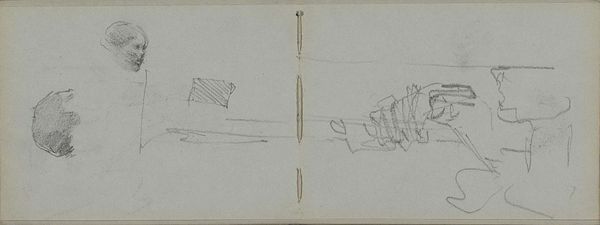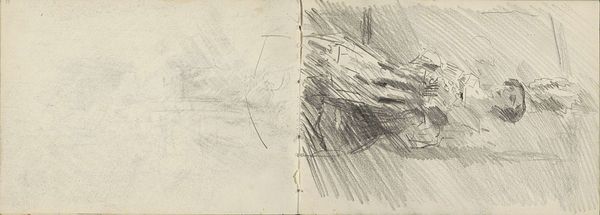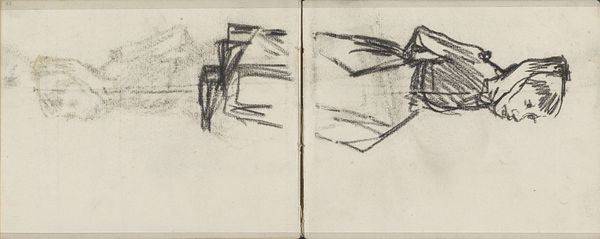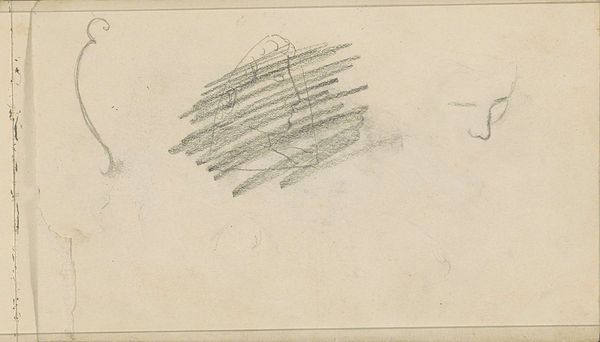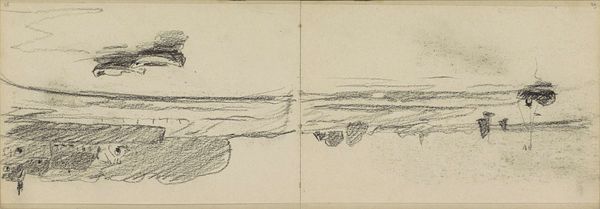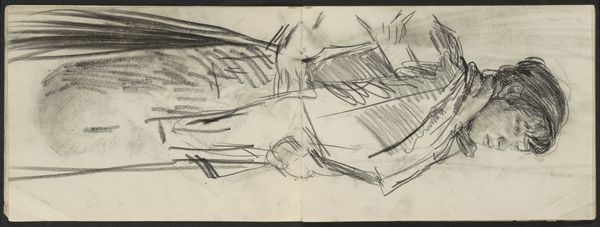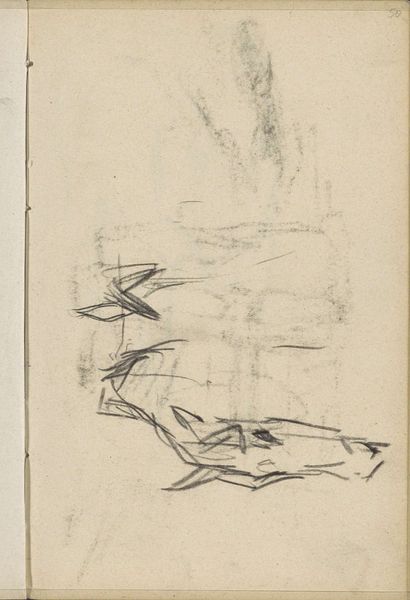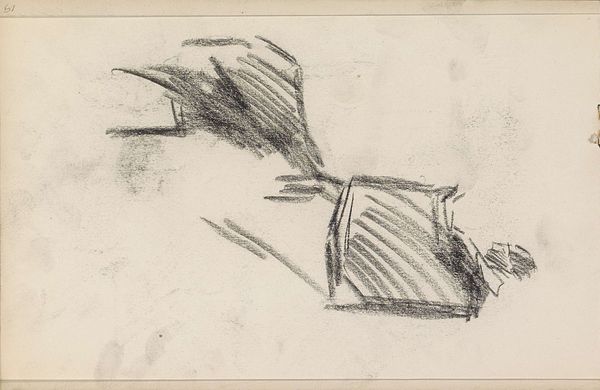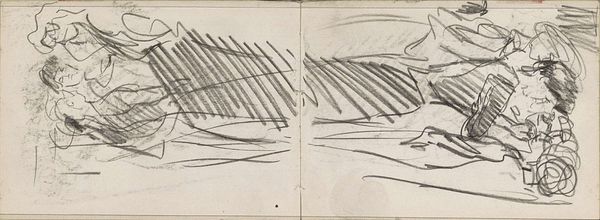
Staande man met hoed en twee soldaten te paard, mogelijk artilleristen 1884 - 1886
0:00
0:00
georgehendrikbreitner
Rijksmuseum
drawing, pencil
#
drawing
#
impressionism
#
landscape
#
pencil
Copyright: Rijks Museum: Open Domain
Curator: Welcome. Here we have a pencil drawing by George Hendrik Breitner, made between 1884 and 1886, entitled "Standing Man with Hat and Two Soldiers on Horseback, Possibly Artillerymen." Editor: There's such raw energy in these lines. The scene almost jumps off the page, doesn't it? Like a fleeting glimpse of urban life captured in charcoal and bound in a simple notebook. Curator: Yes, Breitner, deeply impacted by the everyday street life of Amsterdam, made many drawings capturing that exact sensibility. He had a particular interest in military subjects; this comes after his military service, an experience that profoundly shaped his perspective, both on society and how he could capture reality through observation. Editor: That context explains the visual economy of this piece; he’s using those broad pencil strokes, almost like rapid-fire observations. Are there multiple sketches pieced together here? Curator: Precisely, the work lives in a sketchbook, and the composition spans two pages. Notice the concentration of darker marks and pressure on the horses and men. This hints at their central position within the landscape he is attempting to sketch. Editor: What really catches my eye is the material handling, that direct application of the pencil and that kind of immediate rendering of bodies in space. It challenges the traditional academic drawings—it shows us an interesting use of that quick gesture of the hand as it meets the paper. It allows the piece to be direct without becoming laborious or pretentious. Curator: Absolutely. Breitner was committed to representing contemporary life. He felt burdened by conventional, staged portrayals that lacked vitality, therefore he captured quick sketches in notebooks such as this and also became fascinated by the relatively new technology of handheld cameras to do so. His choices reflected his time, a turn of the century with deep transformation and a shifting cultural gaze. Editor: It makes you wonder about the economics of art and artists' livelihoods at the time; a sketchbook practice indicates an efficient methodology, a means to amass visual information for potential future work... or simply to reflect and absorb oneself with contemporary existence. Curator: It brings a completely other perspective of social structures and artistic innovation in that specific point in history, I think. I see the soldiers more sharply now. Editor: Exactly, it is this tension that the artist has produced that I now see more sharply in this work.
Comments
No comments
Be the first to comment and join the conversation on the ultimate creative platform.

